Experimental Research on the Preparation of K2CO3/Expanded Vermiculite Composite Energy Storage Material
Abstract
:1. Introduction
2. Materials and Instruments
3. Preparation of Composite Material
4. Results and Discussion
4.1. The Specific Gravity of K2CO3
4.1.1. Operation
4.1.2. Vacuum Degree
4.1.3. EVM Particle Size
4.1.4. Solution Concentration
4.2. Distribution of K2CO3
4.2.1. Vacuum Degree
4.2.2. Solution Concentration
5. Conclusions
Author Contributions
Funding
Institutional Review Board Statement
Informed Consent Statement
Data Availability Statement
Conflicts of Interest
References
- IPCC. Global Warming of 1.5°C. An IPCC Special Report on the Impacts of Global Warming of 1.5°C Above Pre-Industrial Levels and Related Global Greenhouse Gas Emission Pathways, in the Context of Strengthening the Global Response to the Threat of Climate Change, Sustainable Development, and Efforts to Eradicate Poverty; IPCC: Geneva, Switzerland, 2018. [Google Scholar]
- IPCC. Climate Change 2014: Mitigation of Climate Change. Contribution of Workinggroup Ⅲ to the Fifth Assessment Report of the Intergovernmental Panel on Climate Change; Edenhofer, O., Pichs-Madruga, R., Sokona, Y., Farahani, E., Kadner, S., Seyboth, K., Adler, A., Baum, I., Brunner, S., Eickemeier, P., et al., Eds.; Cambridge University Press: Cambridge, UK; New York, NY, USA, 2014. [Google Scholar]
- Michel, B.; Mazet, N.; Neveu, P. Experimental investigation of an open thermochemical process operating with a hydrate salt for thermal storage of solar energy: Local reactive bed evolution. Appl. Energy 2016, 180, 234–244. [Google Scholar] [CrossRef]
- Donkers, P.A.J.; Sögütoglu, L.C.; Huinink, H.P.; Fischer, H.R.; Adan, O.C.G. A review of salt hydrates for seasonal heat storage in domestic applications. Appl. Energy 2017, 199, 45–68. [Google Scholar] [CrossRef]
- Shkatulov, A.I.; Houben, J.; Fischer, H.; Huinink, H.P. Stabilization of K2CO3 in vermiculite for thermochemical energy storage. Renew. Energy 2020, 150, 990–1000. [Google Scholar] [CrossRef]
- Gaeini, M.; Shaik, S.A.; Rindt, C.C.M. Characterization of potassium carbonate salt hydrate for thermochemical energy storage in buildings. Energy Build. 2019, 196, 178–193. [Google Scholar] [CrossRef]
- Yu, N.; Wang, R.Z.; Lu, Z.S.; Wang, L.W. Development and characterization of silica gel–LiCl composite sorbents for thermal energy storage. Chem. Eng. Sci. 2014, 111, 73–84. [Google Scholar] [CrossRef]
- Courbon, E.; D’Ans, P.; Skrylnyk, O.; Frere, M. New prominent lithium bromide-based composites for thermal energy storage. J. Energy Storage 2020, 32, 101699. [Google Scholar] [CrossRef]
- Posern, K.; Kaps, C. Calorimetric studies of thermochemical heat storage materials based on mixtures of MgSO4 and MgCl2. Thermochim. Acta 2010, 502, 73–76. [Google Scholar] [CrossRef]
- Shere, L.; Trivedi, S.; Roberts, S.; Sciacovelli, A.; Ding, Y. Synthesis and Characterization of Thermochemical Storage Material Combining Porous Zeolite and Inorganic Salts. Heat Transf. Eng. 2019, 40, 1176–1181. [Google Scholar] [CrossRef]
- Chan, K.C.; Chao, C.Y.; Sze-To, G.N.; Hui, K.S. Performance predictions for a new zeolite 13X/CaCl2 composite adsorbent for adsorption cooling systems. Int. J. Heat Mass Transf. 2012, 55, 3214–3224. [Google Scholar] [CrossRef]
- Grekovaa, D.; Gordeeval, G.; Aristovy, I. Composite “LiCl/vermiculite” as advanced water sorbent for thermal energy storage. Appl. Therm. Eng. 2017, 124, 1401–1408. [Google Scholar] [CrossRef]
- Veselovskaya, J.V.; Critoph, R.E.; Thorpe, R.N.; Metcalf, S.; Tokarev, M.M.; Aristov, Y.I. Novel ammonia sorbents “porous matrix modified by active salt” for adsorptive heat transformation: 3. Testing of “BaCl2/vermiculite” composite in a lab-scale adsorption chiller. Appl. Therm. Eng. 2010, 30, 1188–1192. [Google Scholar] [CrossRef]
- Zhang, Y.N.; Wang, R.Z.; Zhao, Y.J.; Li, T.X.; Riffat, S.B.; Wajid, N.M. Development and thermochemical characterizations of vermiculite/SrBr2 composite sorbents for low-temperature heat storage. Energy 2016, 115, 120–128. [Google Scholar] [CrossRef]
- Li, C. Preparation and Property Control of Mineral-based Composite Thermal Storage Materials; Central South University: Changsha, China, 2013. [Google Scholar]
- Xu, B.; Ma, H.; Lu, Z.; Li, Z. Paraffin/expanded vermiculite composite phase change material as aggregate for developing lightweight thermal energy storage cement-based composites. Appl. Energy 2015, 160, 358–367. [Google Scholar] [CrossRef]
- Karaipekli, A.; Sarı, A. Preparation, thermal properties and thermal reliability of eutectic mixtures of fatty acids/expanded vermiculite as novel form-stable composites for energy storage. J. Ind. Eng. Chem. 2010, 16, 767–773. [Google Scholar] [CrossRef]
- Tian, W. Study on Design, Synthesis and Properties of Vermiculite Composite Functional Materials; Beijing University of Chemical Technology: Beijing, China, 2017. [Google Scholar]
- Feng, J.; Liu, M.; Fu, L.; Zhang, K.; Xie, Z.; Shi, D.; Ma, X. Enhancement and mechanism of vermiculite thermal expansion modified by sodium ions. RSC Adv. 2020, 10, 7635–7642. [Google Scholar] [CrossRef] [PubMed] [Green Version]
- de Vargas Brião, G.; da Silva, M.G.C.; Vieira, M.G.A. Neodymium recovery from aqueous solution through adsorption/desorption onto expanded vermiculite. Appl. Clay Sci. 2020, 198, 105825. [Google Scholar] [CrossRef]
- Sutcu, M. Influence of expanded vermiculite on physical properties and thermal conductivity of clay bricks. Ceram. Int. 2015, 41 Pt B, 2819–2827. [Google Scholar] [CrossRef]
- Koksal, F.; Mutluay, E.; Gencel, O. Characteristics of isolation mortars produced with expanded vermiculite and waste expanded polystyrene. Constr. Build. Mater. 2020, 236, 117789. [Google Scholar] [CrossRef]
- Mazloomi, F.; Jalali, M. Effects of vermiculite, nanoclay and zeolite on ammonium transport through saturated sandy loam soil: Column experiments and modeling approaches. Catena 2019, 176, 170–180. [Google Scholar] [CrossRef]
- Sögütoglu, L.C.; Donkers, P.A.J.; Fischer, H.R.; Huinink, H.P.; Adan, O.C.G. In-depth investigation of thermochemical performance in a heat battery: Cyclic analysis of K2CO3, MgCl2 and Na2S. Appl. Energy 2018, 215, 159–173. [Google Scholar] [CrossRef]
- Wang, C.; Zhang, P.; Xie, C.Q.; Wu, H. Effect of Different Concentration Salt Solution and Saline Soil on Capillary Water Upward Movement. Water Sav. Irrig. 2014, 12, 26–28. [Google Scholar]
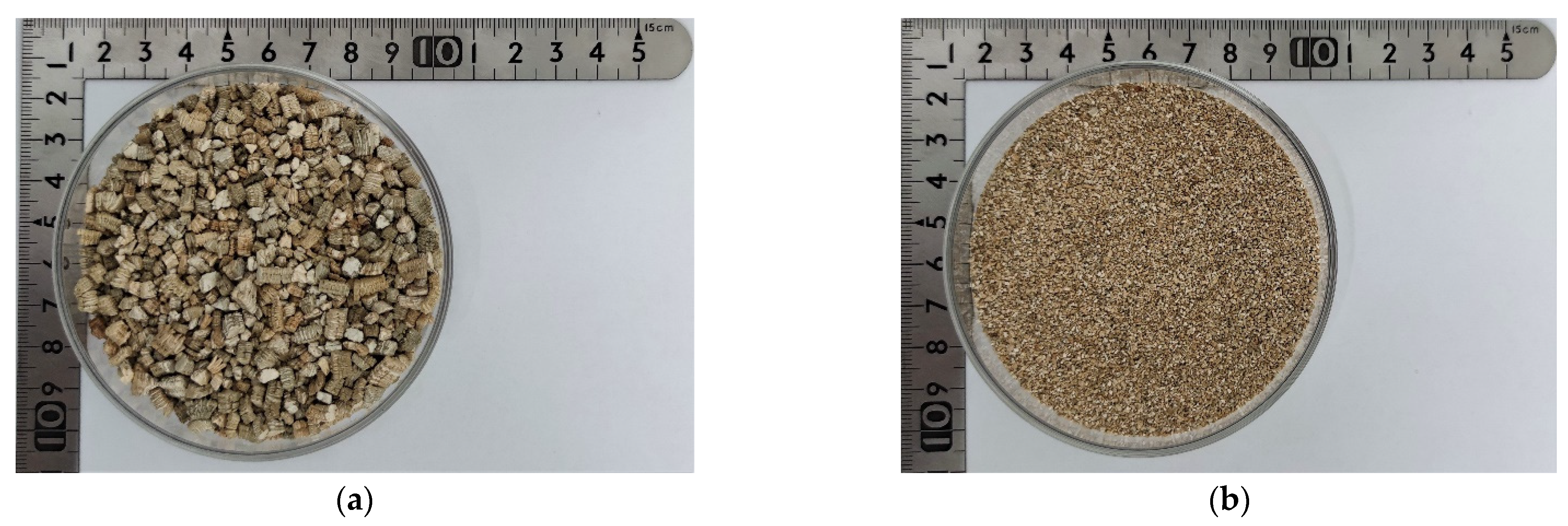
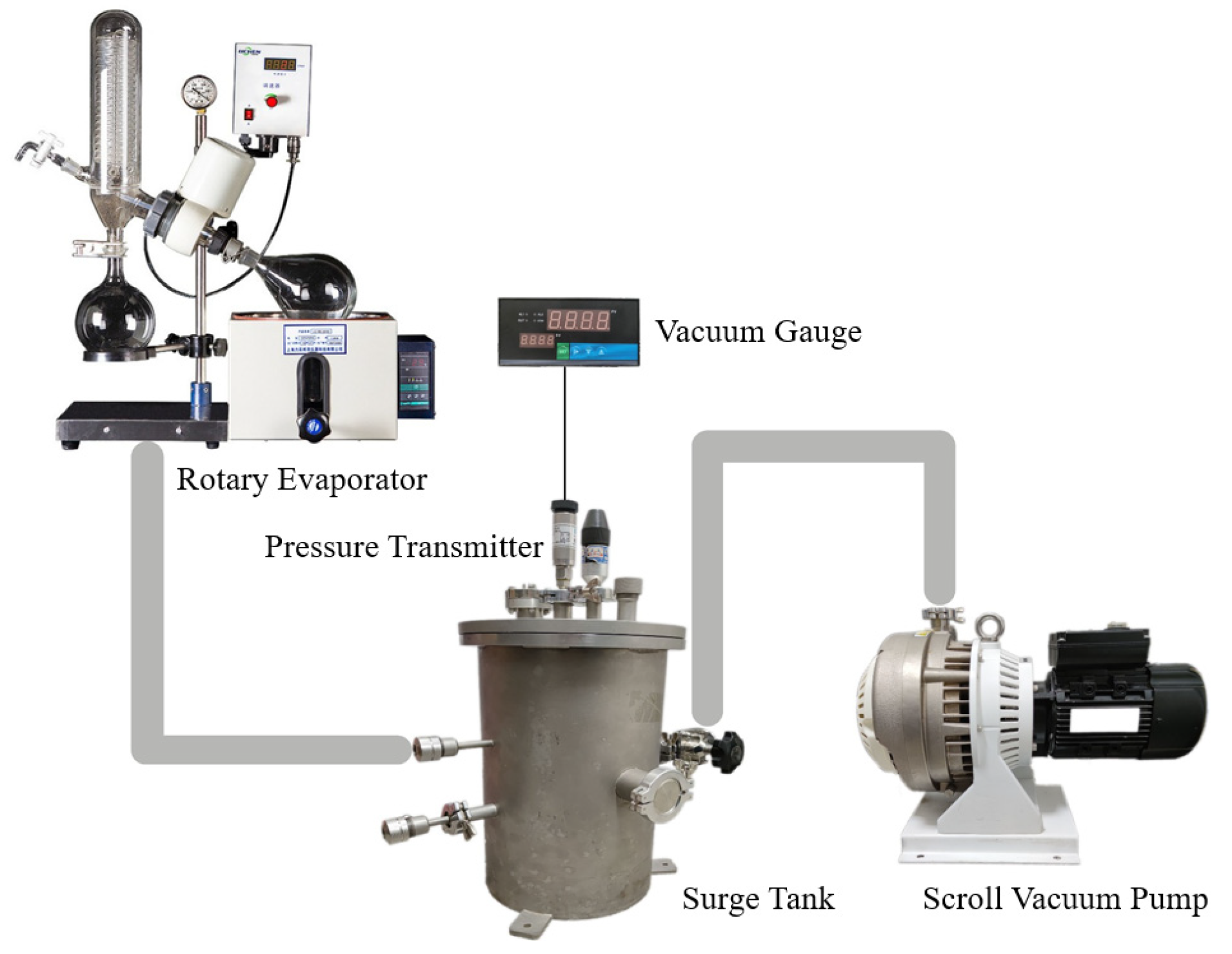

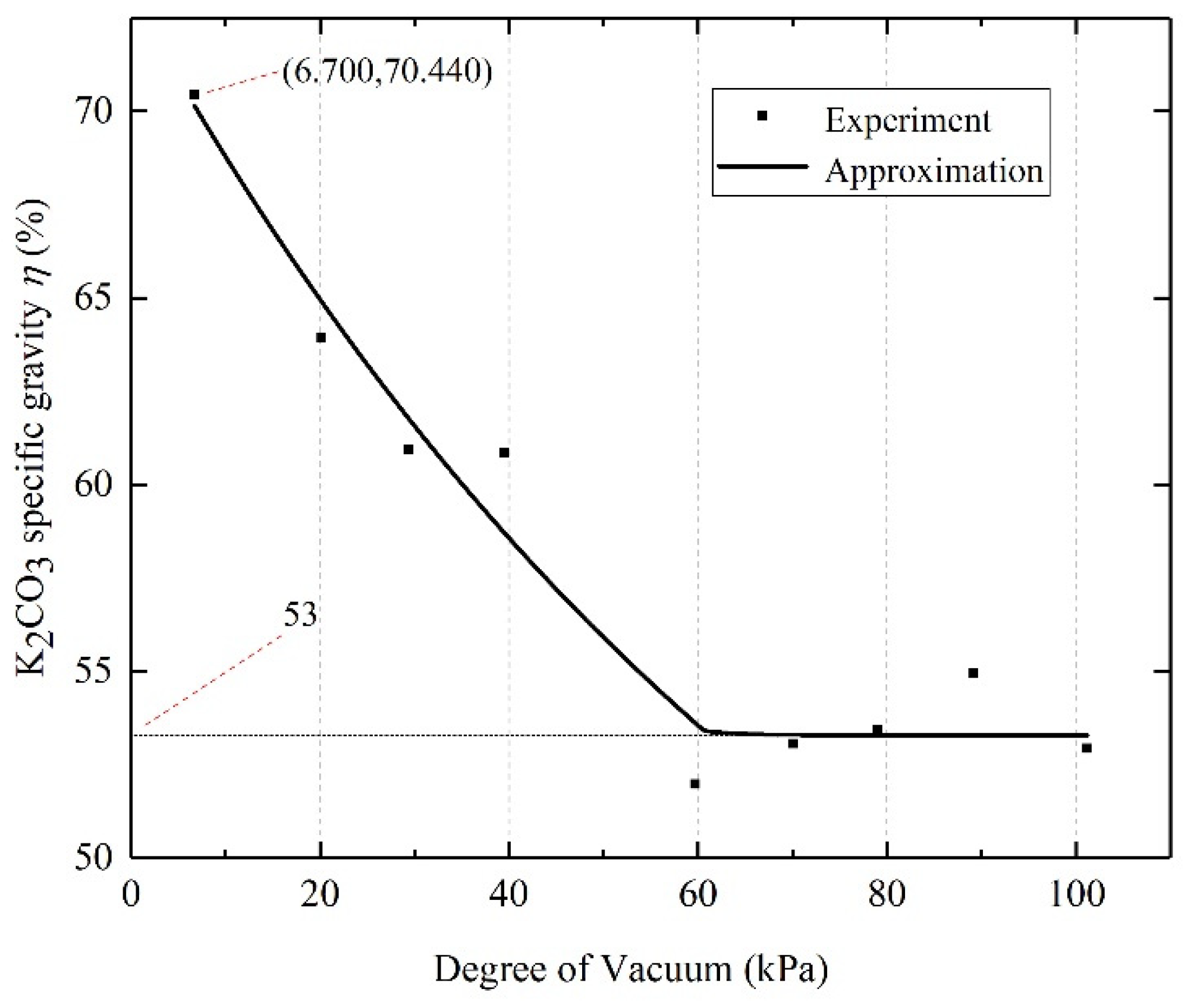
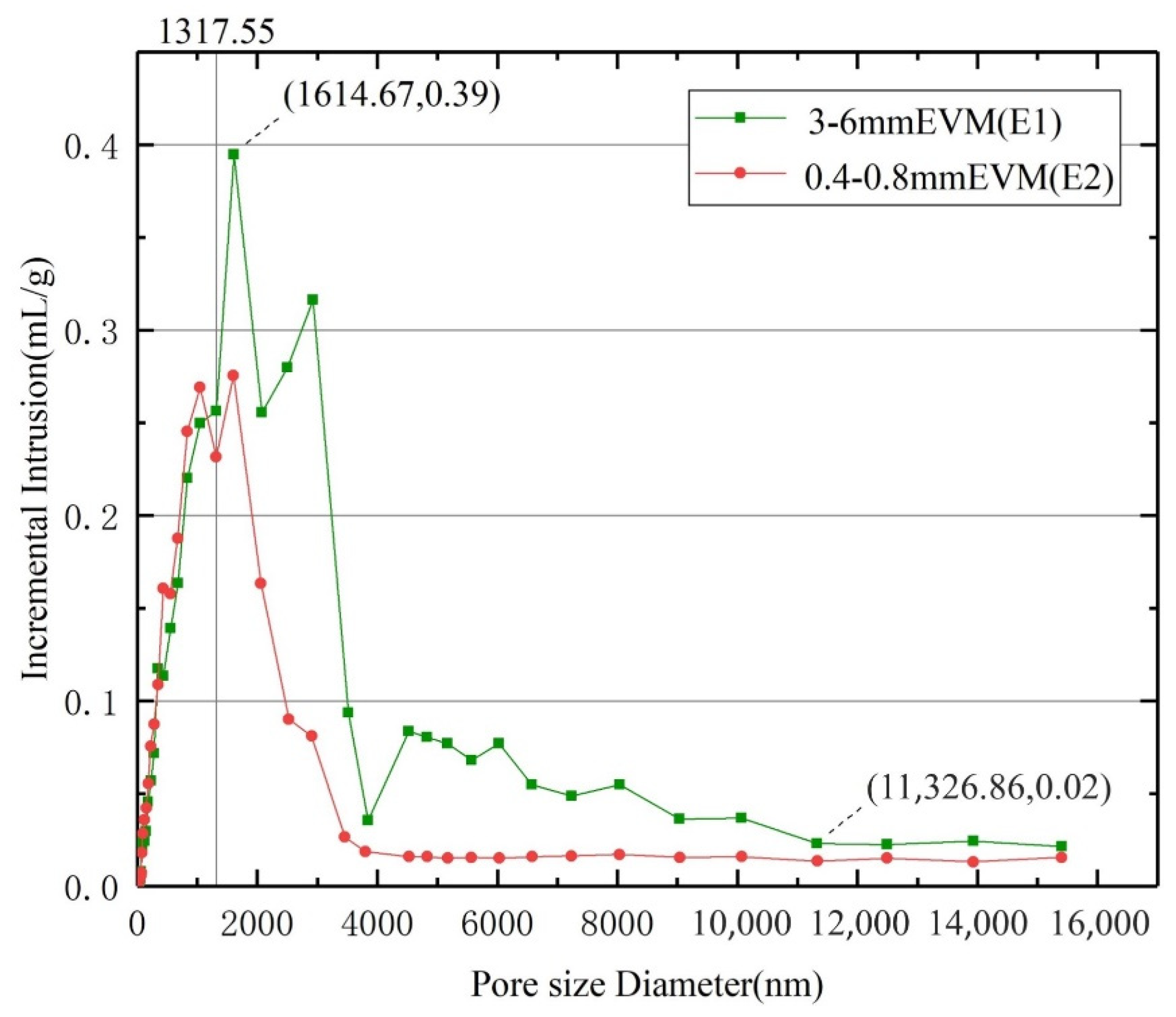
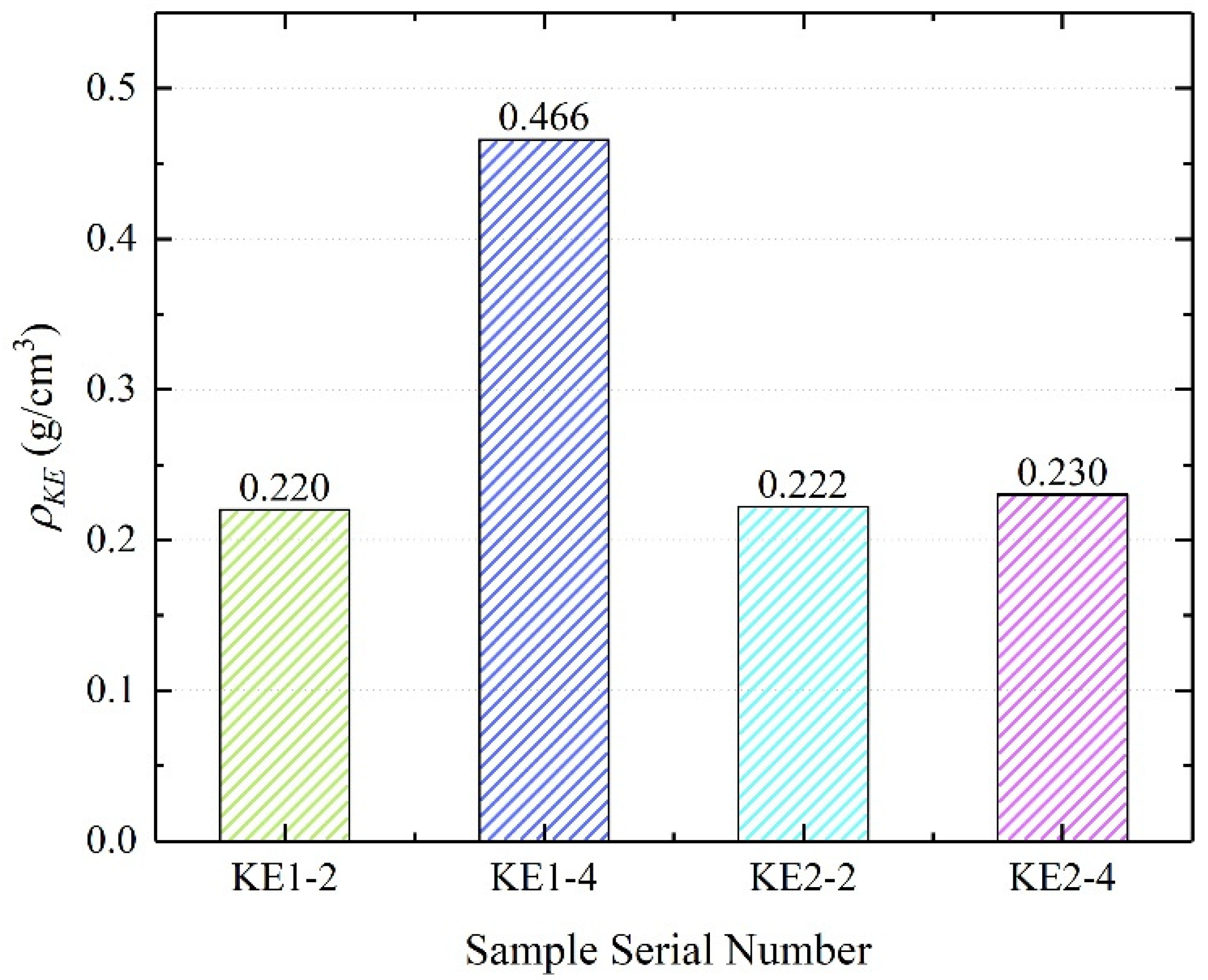
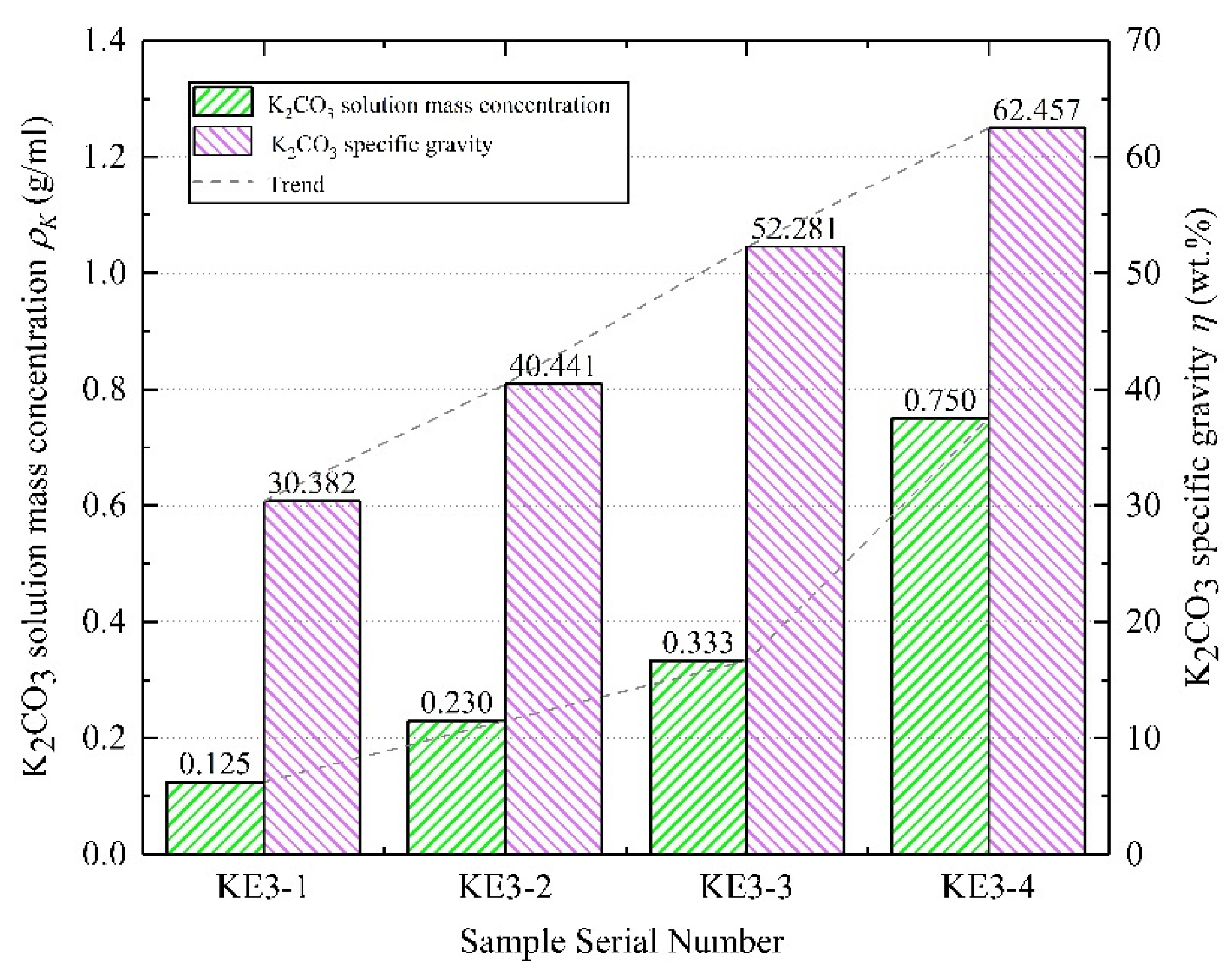
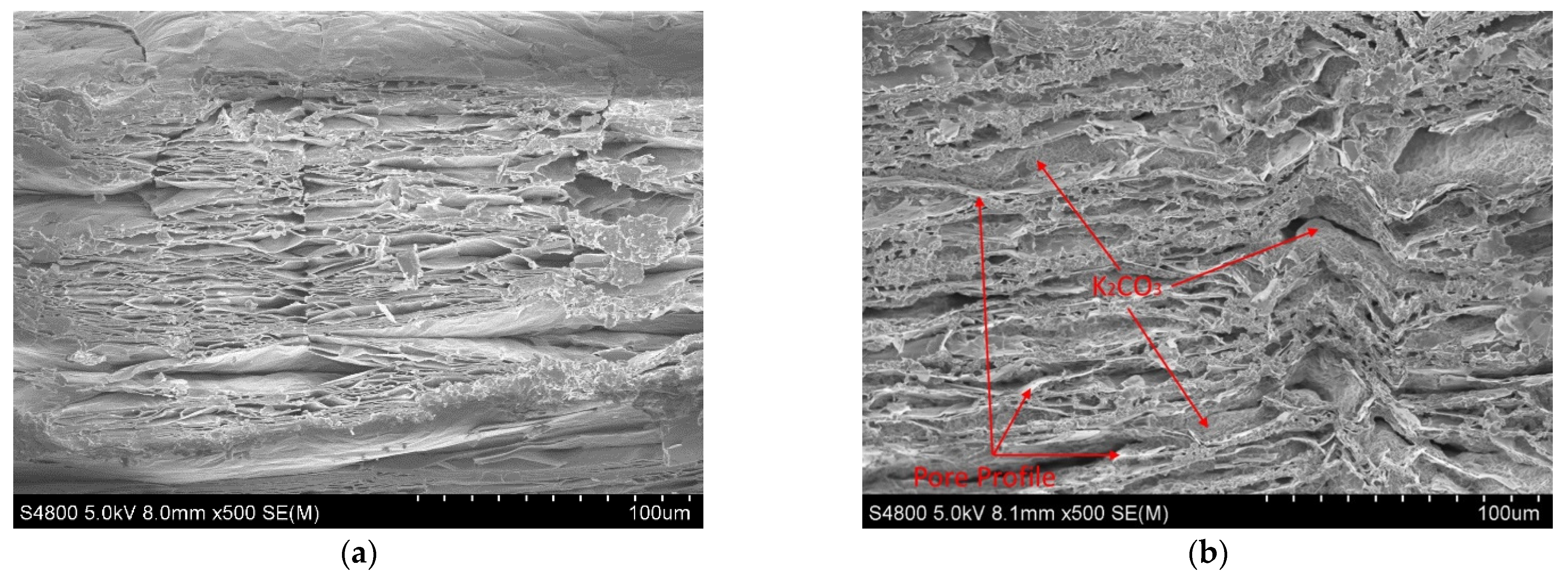


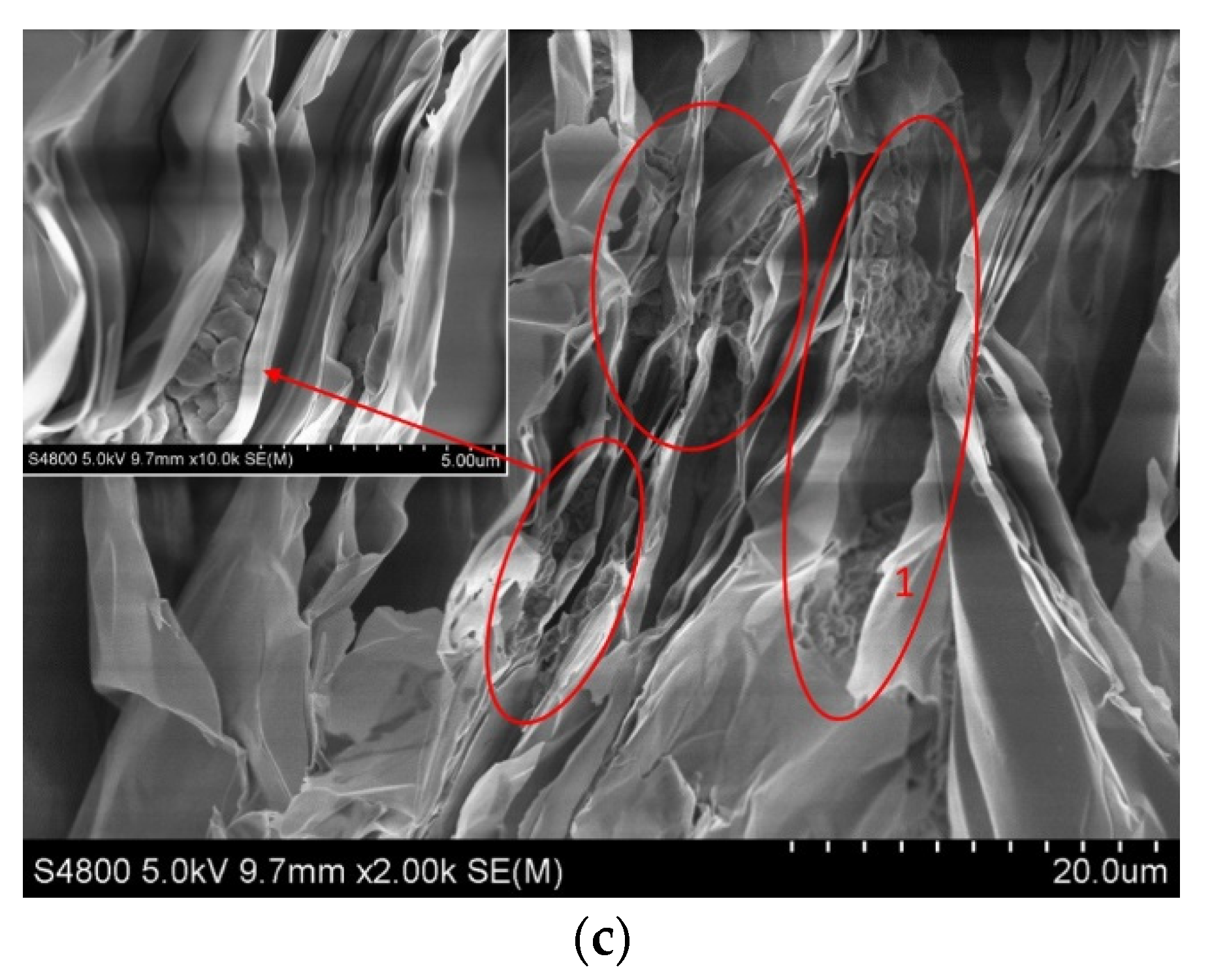
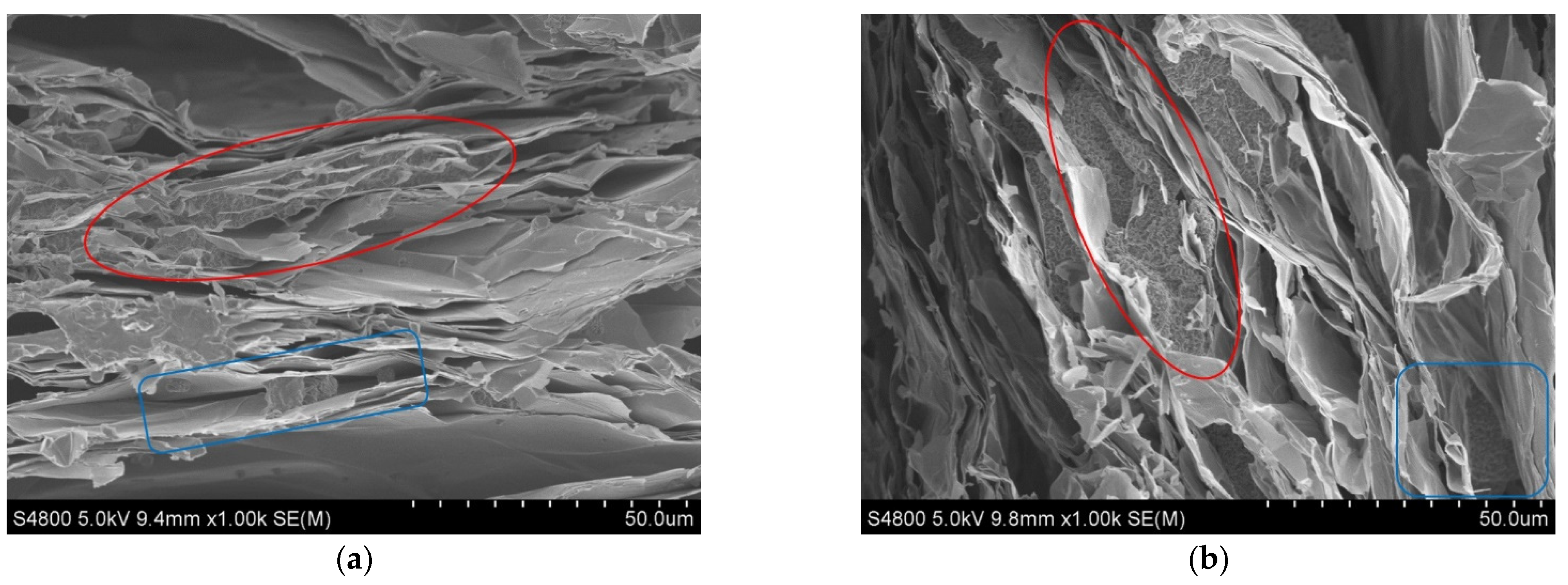
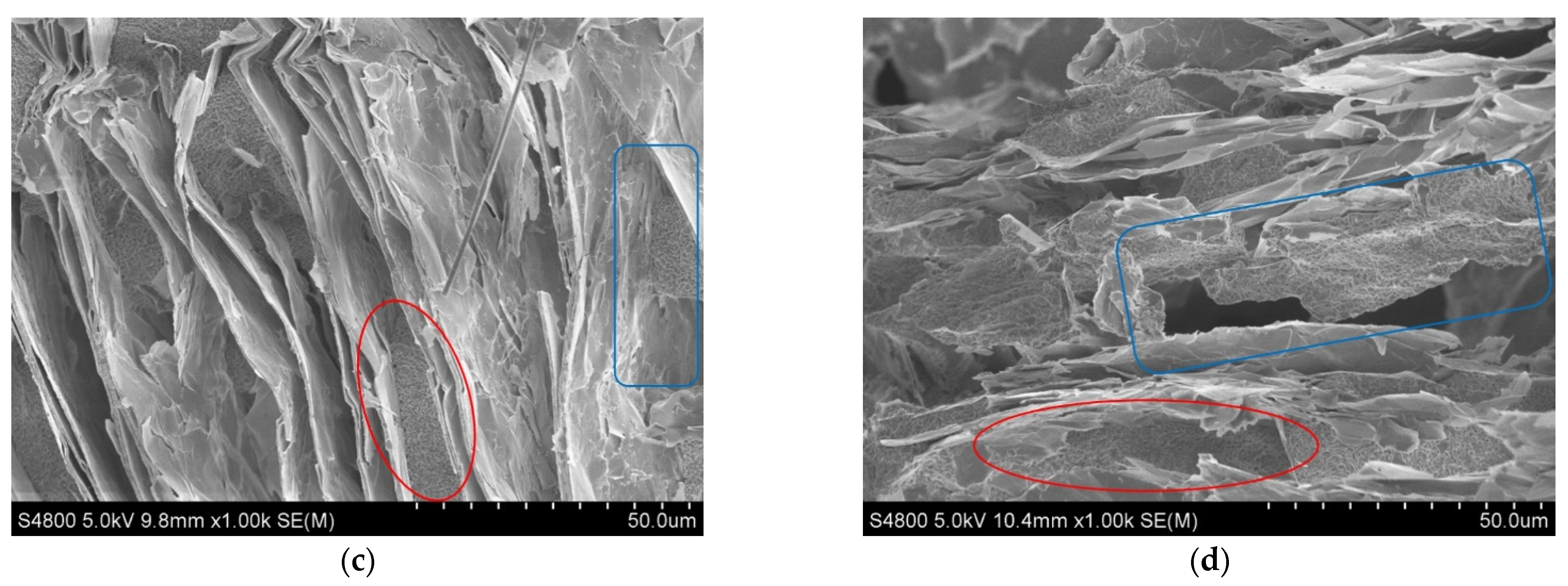
| Series | Sample No. | Main Operation | Operation during Impregnation | EVM Particle Size D/mm | Mass Concentration of K2CO3 Solution ρk/(g/mL) |
|---|---|---|---|---|---|
| KE1 | KE1-1 | Impregnation for 48 h | ─ | 3~6 | 1.12 |
| KE1-2 | Impregnation for 6 h | ─ | |||
| KE1-3 | Impregnation for 6 h | Mix | |||
| KE1-4 | Vacuum impregnation for 6 h | ─ | |||
| KE1-5 | Vacuum impregnation for 6 h | Mix | |||
| KE1-6 | Vacuum impregnation for 6 h | Mix + evaporated water | |||
| KE2 | KE2-2 | Impregnation for 6h | ─ | 0.4~0.8 | 1.12 |
| KE2-4 | Vacuum impregnation for 6 h | ─ | |||
| KE3 | KE3-1~4 | Vacuum impregnation for 6 h | ─ | 3~6 | 0.125~0.750 |
| Sample No. | KE1-1 | KE1-2 | KE1-3 | KE1-4 | KE1-5 | KE1-6 |
|---|---|---|---|---|---|---|
| Vacuum degree (absolute pressure) Pabs/kPa | 101.2 | 101.2 | 101.2 | 6.7 | 10.0 | 8.5 |
| Quality after drying mKE/g | 10.081 | 10.621 | 10.483 | 16.915 | 15.532 | 16.799 |
| K2CO3 accounts for the specific gravity of composite material η/wt.% | 50.402 | 52.923 | 52.304 | 70.440 | 67.808 | 70.236 |
| Sample No. | Vacuum Degree (Absolute Pressure) Pabs/kPa | Quality after Drying mKE/g | K2CO3 Accounts for the Specific Gravity of Composite Material η/wt.% |
|---|---|---|---|
| KE2-2 | 101.2 | 9.522 | 47.490 |
| KE2-4 | 7.8 | 9.680 | 48.347 |
| Sample No. | Porosity/% | Average Pore Diameter DA/nm | Bulk Density ρB/(g/cm3) | |
|---|---|---|---|---|
| E1 | 96.2082 | 1068.24 | 18.418 | 0.1956 |
| E2 | 98.4322 | 861.82 | 18.568 | 0.2460 |
Publisher’s Note: MDPI stays neutral with regard to jurisdictional claims in published maps and institutional affiliations. |
© 2022 by the authors. Licensee MDPI, Basel, Switzerland. This article is an open access article distributed under the terms and conditions of the Creative Commons Attribution (CC BY) license (https://creativecommons.org/licenses/by/4.0/).
Share and Cite
Zou, D.; Yue, X.; He, T.; Ding, J.; Ba, D. Experimental Research on the Preparation of K2CO3/Expanded Vermiculite Composite Energy Storage Material. Materials 2022, 15, 3702. https://doi.org/10.3390/ma15103702
Zou D, Yue X, He T, Ding J, Ba D. Experimental Research on the Preparation of K2CO3/Expanded Vermiculite Composite Energy Storage Material. Materials. 2022; 15(10):3702. https://doi.org/10.3390/ma15103702
Chicago/Turabian StyleZou, Dequan, Xiangji Yue, Tianyi He, Jianan Ding, and Dechun Ba. 2022. "Experimental Research on the Preparation of K2CO3/Expanded Vermiculite Composite Energy Storage Material" Materials 15, no. 10: 3702. https://doi.org/10.3390/ma15103702
APA StyleZou, D., Yue, X., He, T., Ding, J., & Ba, D. (2022). Experimental Research on the Preparation of K2CO3/Expanded Vermiculite Composite Energy Storage Material. Materials, 15(10), 3702. https://doi.org/10.3390/ma15103702






